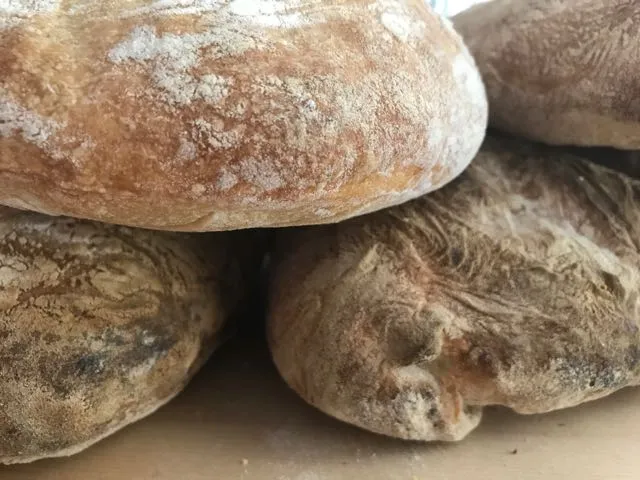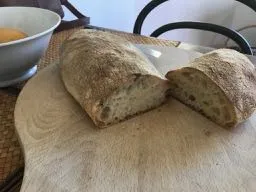
I have long been a fan of the Semolina version of Jason’s Quick Coccodrillo Ciabatta, which may have been my first TFL recipe attempt. @alfanso’s recent post on 80% PFF Ciabatta got me thinking it had been too long since I’d investigated alternative versions. Thinking back on the Durum community bake, I decided to apply Alfanso’s method to a hybrid ciabatta and I think it worked out ok.
Modifications
Increased Jason's semolina portion from 30% to 50% and used the finer Semola Rimacinata
Reduced Jason's salt percentage from 3% to 2.5%, splitting the difference with Alfanso
Upped Alfanso's hydration to 83% (including the oil portion)
Retained Jason's 1.3% yeast...twas a lively dough indeed
Pre-fermented flour at 35%
Ingredients
Semola Flour 535 g
Bread Flour 162 g
AP Flour (374 g (all from levain and poolish)
ADY 27 g
Salt 27g
Olive Oil 32 g
Water 857 g (374 g from levain and poolish)
Process (mostly per Alfanso)
Prep ~350 g levain over 3 generations
Prep ~400 g poolish
Mix poolish, levain and 95% of additional water, add yeast, rest 10
Add remaining flour, mix to shaggy, rest 10
3 minutes with hook at 4, rest 10
3 minutes with hook at 6, rest 10
Add oil, salt & remaining water
Mix high speed 8 minutes
Bulk Ferment ~2 hours until 3x (lively dough!)
30 minute folds
Divide, "shape" and rest 45 minutes
Preheat oven to 550
Flip, stretch
Bake 10 minutes @475with steam, then 10 minutes @450 no steam
2 kg batch produced excellent bread. Lovely airy crumb. Crust had that pahoehoe ropy lava texture thing going. Made a second 3 kg batch with similar results, though the one 500 g batch of dough I held in refrigerator overnight did not get quite the loft of the unrefrigerated dough.

This project leaves me with one rumination. Why do ciabatta recipes insist on Biga instead of poolish? I know...Italian tradition, but poolish is so much more straightforward and the math is easier. Does anyone have any objective observations about qualitative differences between doughs resulting from the two pre-ferments. As with Hammelman's 125% poolish, the difference is interesting but I can't tease out a great reason to go there...
- foodforthought's Blog
- Log in or register to post comments
To me what YOUR preference is, that is what you should do! I always like Poolish, so that's what I do. But what do I know?